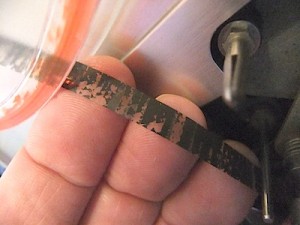This doesn't neatly fit into any category because this is something that applies to all sorts of things including our appliances, computers, and even cars. I've seen old tube TVs still working after 25 years although often they looked bad and had really bad burn in or poor performance. But they still worked.
We've been talking about flash-based SSD life in the computer forum here on BITOG, and I was under the impression that the last SSD I bought was near 100% but then looked it up and after about 3.5 years of use one tool says it still has 74% of its useful life. But that's not really all that bad if I can get 10 years out of it and where I can proactively duplicate the contents if I wish to still use it.
I'm participate in an Apple forum where there are some complaints that older Apple devices have really poor support. However, that may not be as much a concern than the possibility that something like an iPad is going to be toast within 10 years simply on the basis of the storage (that can't be replaced) wearing out. I use mine for viewing video content where I can make sure that a movie is downloaded rather than actively streaming. But then again that would seem to accumulate more erase events every time I download and then erase when I don't need a movie or run out of storage.
I'm currently driving a car that's over 20 years old and is still working fine, including the radio and all the critical components. I'm not quite sure how long newer cars are going to last with critical components using more and more NAND flash memory for data storage. They store all sorts of information on operation in NAND flash and so much of the systems are really just computers. Maybe this stuff can be replaced, but I'm thinking of it is critical and a lot of the data will be gone unless it's stored in a way that's far more robust than NAND flash. But maybe they're not going the route of consumer electronics with trim-level or quad-level flash, but more robust single-level if they don't really have to store terabytes. Or maybe they might have that for storage of simple stuff like downloading music or video but with more critical systems getting more robust. And they've got to have some sort of warning that would allow for the components to be proactively replaced and the data securely transferred.
https://www.tuxera.com/blog/automotive-flash-real-lifetime/
We've been talking about flash-based SSD life in the computer forum here on BITOG, and I was under the impression that the last SSD I bought was near 100% but then looked it up and after about 3.5 years of use one tool says it still has 74% of its useful life. But that's not really all that bad if I can get 10 years out of it and where I can proactively duplicate the contents if I wish to still use it.
I'm participate in an Apple forum where there are some complaints that older Apple devices have really poor support. However, that may not be as much a concern than the possibility that something like an iPad is going to be toast within 10 years simply on the basis of the storage (that can't be replaced) wearing out. I use mine for viewing video content where I can make sure that a movie is downloaded rather than actively streaming. But then again that would seem to accumulate more erase events every time I download and then erase when I don't need a movie or run out of storage.
I'm currently driving a car that's over 20 years old and is still working fine, including the radio and all the critical components. I'm not quite sure how long newer cars are going to last with critical components using more and more NAND flash memory for data storage. They store all sorts of information on operation in NAND flash and so much of the systems are really just computers. Maybe this stuff can be replaced, but I'm thinking of it is critical and a lot of the data will be gone unless it's stored in a way that's far more robust than NAND flash. But maybe they're not going the route of consumer electronics with trim-level or quad-level flash, but more robust single-level if they don't really have to store terabytes. Or maybe they might have that for storage of simple stuff like downloading music or video but with more critical systems getting more robust. And they've got to have some sort of warning that would allow for the components to be proactively replaced and the data securely transferred.
https://www.tuxera.com/blog/automotive-flash-real-lifetime/


